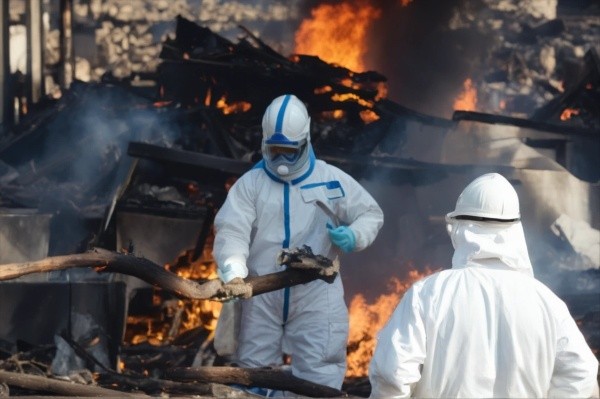Iran’s Plan to Strike Back Against the U.S.
Iran’s Military Preparations Following U.S. Attacks
Loading...

India experienced nearly 1.2 million excess deaths in 2020, according to new data. The life expectancy of Muslims declined the most among all Indians, dropping by over five years.
A recent study has shed light on the potential magnitude of India's COVID-19 death toll during the first phase of the pandemic in 2020. The study, co-authored by 10 demographers and economists from prestigious international institutes, suggests that India may have had nearly 1.2 million excess deaths in 2020, a figure approximately eight times higher than the government's official COVID-19 death count for that year. This revelation has sparked discussions about the true impact of the pandemic and the disparities it has exposed within Indian society.
Uncovering the Extent of the Pandemic's Impact
The study, based on the Indian government's 2019-21 National Family Health Survey (NFHS), revealed that the excess deaths in 2020 were 1.5 times higher than the World Health Organization's estimate for India's COVID-19 death toll in the same year. These findings have raised questions about the accuracy of the official death count and the potential underreporting of COVID-19 fatalities in India.
Deep Inequalities Among the Pandemic's Victims
In addition to the staggering excess death toll, the study also highlighted deep inequalities among the pandemic's victims, particularly based on gender, caste, and religion. It was found that the life expectancy of certain communities, such as Indian Muslims, was disproportionately affected, with their life expectancy decreasing by 5.4 years in 2020. Furthermore, the study revealed that women experienced a greater decline in life expectancy compared to men, contrary to the global trend where men's life expectancy was more adversely affected during the pandemic.
Implications for India's COVID-19 Response
The discrepancy between the official death count and the findings of this study has raised concerns about India's COVID-19 response and the transparency of data reporting. While the government reported 481,000 COVID-19 deaths, the WHO estimates the death toll to be significantly higher, ranging from 3.3 million to 6.5 million. This stark contrast has led to calls for greater transparency in data collection and reporting by the Indian government.
The Call for Transparency and Data Release
Experts and researchers have emphasized the importance of releasing comprehensive and accurate data to provide a clearer understanding of the true impact of the pandemic in India. The absence of quality data for 2021, particularly during the Delta variant surge, has further underscored the need for transparent and accessible mortality data. The release of such data could not only address the ongoing debate about the actual death toll but also facilitate informed decision-making and policy responses to future health crises.
Conclusion
The revelations from this study have brought to the forefront the need for transparent and comprehensive data reporting, particularly in the context of public health crises. The disparities in the pandemic's impact on different segments of Indian society underscore the importance of addressing systemic inequalities and ensuring equitable access to healthcare. As India continues to navigate the aftermath of the pandemic, the availability of accurate and transparent data will be crucial in informing evidence-based strategies for public health and healthcare delivery.
Overall, the study's findings have sparked important discussions about the true toll of the pandemic in India and the imperative of data transparency and accuracy in shaping effective public health responses.
BMM - MBA
Iran’s Military Preparations Following U.S. Attacks
Troops remain in five strategic locations, raising fears of renewed tensions and long-term occupation.
Opposition forces have taken control of the capital after a significant offensive. Here is how it unravelled.
